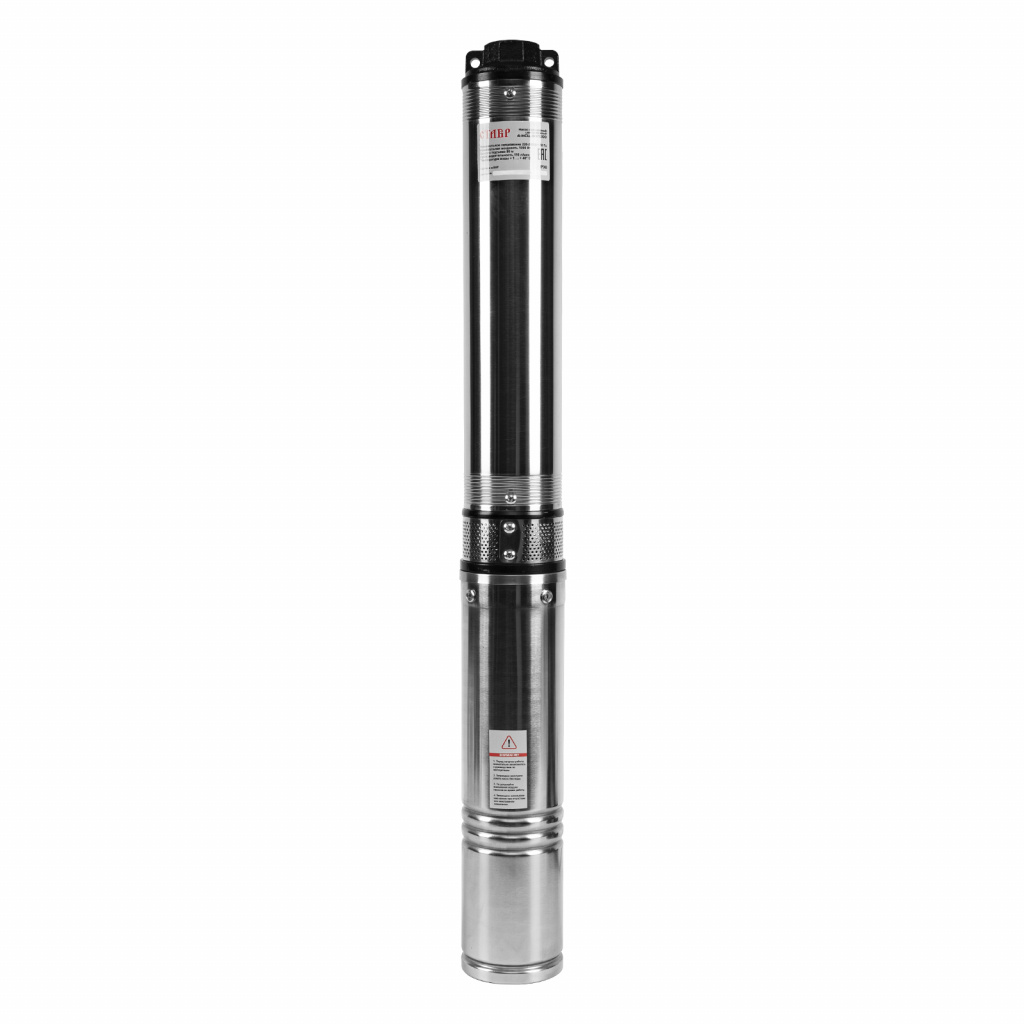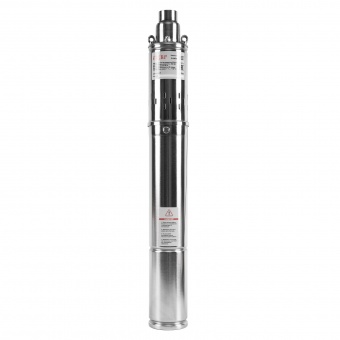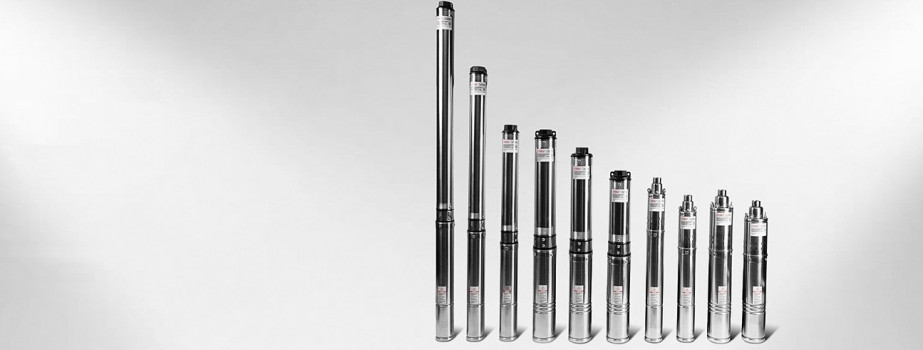STAVR offers a whole line of borehole pumps:
CENTRIFUGAL
Decoding of names:
- 3-NSV-60/550
- 3 – case diameter 3 inches
- NSV - downhole SCREW pump
- 60 – maximum lifting height in meters
- 550 – power consumption in watts
The pump housing is made of stainless steel to ensure better heat transfer, long-lasting and reliable operation. A single-phase asynchronous oil-filled electric motor with a built-in starting capacitor is installed inside, which drives the shaft of the pumping part. All engines of borehole pumps are filled with oil that performs lubricating, cooling and dielectric functions. Depending on the type of pump (screw/centrifugal), a stainless steel screw screw or plastic POM impellers pumping water are fixed to the shaft. Water intake is carried out through the holes of the suction grate located between the engine and the pumping part.
All STAVR borehole pumps are equipped with a 20 m long electric power cord with a plug, which is sufficient in most cases. In centrifugal models, the cable is removed from the engine and runs along the pump part from the side, under the protective casing. In screw models, the cable is removed from the top cover. The upper cover of the pump with a threaded branch pipe (without a built-in check valve), and two eyelets for fastening the fastening cable. The centrifugal cover is made of cast iron by casting with subsequent painting, the screw cover is made of stainless steel, so that they can be easily distinguished by their appearance. A thermal relay is built into the motor winding, which protects the pump from overheating. Automatic restart occurs when the temperature drops to the operating temperature. There is no dry running protection in the pump, the installation of external protection is necessary in specific operating conditions.
The products have a household purpose. Please note that these products are not intended for drinking water, but can only be used for household needs. Before using in food, water must be treated appropriately (filtration, boiling).
The main differences of submersible borehole pumps:

|
CentrifugalThis pumping equipment ensures the pumping of water due to the centrifugal force that occurs during the rotation of the impeller. These types of installations are optimal for pumping uncontaminated water with a small amount of impurities. Centrifugal pumps have higher productivity. Centrifugal (borehole) are suitable for long-term operation. They are characterized by high performance and pressure. The housings are narrow and elongated, they fit even in small (from 80 mm) wells. Some models can raise water from a depth of up to 100 meters – they are suitable for artesian wells. |

|
ScrewThese pumps are characterized by a lower level of efficiency in comparison with centrifugal pumps, therefore they are not suitable for the industrial sphere and are used only for private households that need to pump small volumes of liquid. At the same time, screw pumps are noticeably cheaper than centrifugal pumps. |
Important points when choosing a pump for a specific object
The lifting height directly depends on the supply voltage. The higher the lifting height, the lower the pump performance. The maximum pressure is the maximum height of lifting water from the pump at its maximum permissible immersion without kinks and slopes of the exhaust hose. The maximum capacity is the maximum possible amount of water pumped by the pump per unit of time.
In order for the pump to cover all water needs, and you do not have to overpay, pay attention to the characteristics: The diameter of the pump is adjusted to the size of the well. More precisely, under the diameter of the casing pipes, which keep the inner surface from shedding. There are several standard sizes: for sand wells - 125 and 170 mm, for artesian – 90, 110, 125, 159, 170 mm. The pump should not touch the walls of the pipe, otherwise it will overheat and fail faster. For example, for a well with a diameter of 110 mm, select a pump with a width of no more than 100 mm.
The lifting height is the excess pressure that the pump can create. Calculated on the principle of 1 bar = 10 meters up. Calculated from the water surface. 2-3 bars are added to the result so that there is pressure in the water supply system. For example, if the water mirror in the well is at the level of 20 m, and the faucet on the second floor is at the level of 5 m, choose a pump with a pressure of 5 bar (25 m = 2.5 bar, plus 2.5 bar, so that the system has a good pressure).
Productivity is calculated by the number of water sampling points. Keep in mind that it should be slightly lower than the flow rate (filling capacity) of the well so that the pump does not run dry. Usually, the debit is indicated in the technical passport of the well. If you don't have it, you can calculate it yourself using tables from the Internet.
Design features and advantages of STAVR borehole pumps:
- POWERFUL PRESSURE - allows you to raise water to a great height, which is important for deep wells.
- STAINLESS STEEL HOUSING - protects the pump from damage and corrosion.
- COPPER MOTOR WINDINGS - provide high power and reliability.
- A LONG CABLE WITH A PLUG - allows you to install the pump in most wells without increasing the length.
- BUILT-IN CAPACITOR - makes it possible to operate without a control unit.
- 3 YEAR WARRANTY

